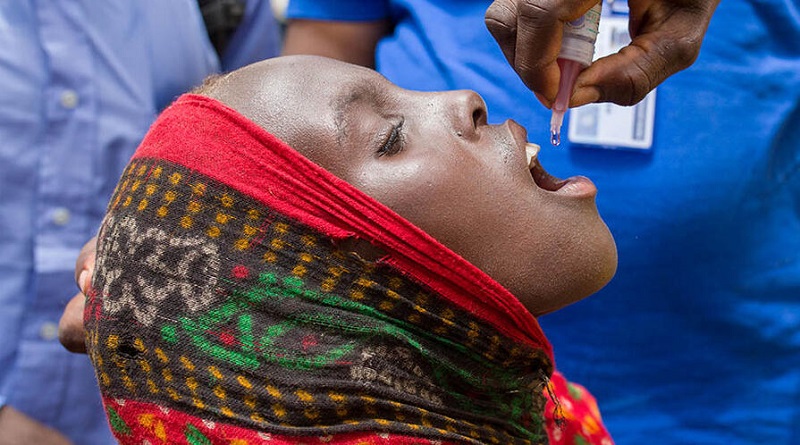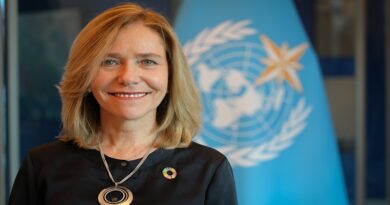Sahel, Lake Chad Basin countries coordinate joint polio eradication plan
In a significant move to combat the ongoing challenge of variant poliovirus transmission in Central and West Africa, Ministers of Health from the Lake Chad Basin countries and Sahel sub-region have published this week a comprehensive cross-border coordination plan for 2024/2025. This critical initiative aims to bolster joint efforts to eradicate polio and prevent its spread across national borders, ensuring a safer and healthier future for millions of children.
The Lake Chad Basin and Sahel regions present unique challenges in the fight against polio, as they remain critical engines of transmission in Africa. Despite significant efforts, variant poliovirus type 2 continues to spread across these areas, driven by factors such as insecurity, inadequate healthcare access, and high population mobility. This cross-border coordination plan aims to strengthen collaboration among the seven key countries—Burkina Faso, Cameroon, Central African Republic, Chad, Mali, Niger and Nigeria—to interrupt transmission by the end of 2025.
The African Region, declared free of indigenous wild poliovirus in August 2020, now faces a new and urgent threat: the intense transmission of type 2 variant poliovirus. The initiative is part of a broader Africa Regional Polio Eradication Action Plan that sets a bold and comprehensive approach to end all forms of poliovirus transmission in Africa.
The plan emphasizes a more aggressive outbreak response strategy, treating all polio cases, including those linked to circulating variant polioviruses, with the same urgency as wild poliovirus. With the implementation of expanded, high-quality immunization campaigns, the plan aims to interrupt all ongoing polio transmission by December 2025.
Central to this strategy will be the new ¨Lake Chad Basin Task Team¨, a coordination office based in N’djamena to centralize the polio response. This will help health authorities, technical teams, and countries to better coordinate by sharing information in real time for informed public health decisions.
“This situation demands a unified, inter-country response akin to the successful efforts that eliminated the wild poliovirus, therefore we are working on a robust incident management system to ensure synchronized vaccinations and cross-border coordination” said Dr Matshidiso Moeti, World Health Organization (WHO) Regional Director for Africa.
High-level political commitment is central to the success of this initiative. During the virtual interministerial meeting on 16 August 2024 and during a Side Event attended by Member States from the African region, senior government leaders and Global Polio Eradication Initiative partners expressed commitment to interrupt variant poliovirus transmission.
In 2024 alone, 134 polio detections (both in the environment and in affected people, as of September 5th) have been reported jointly in Burkina Faso, Cameroon, Central African Republic, Chad, Mali, Niger and Nigeria. In response, nearly 70 million children have been vaccinated across these critical areas since the beginning of the year.
Recognizing the critical need for renewed collaboration, government leaders, along with WHO, UNICEF and other partners came together in July and August 2024 and crafted a new plan focused on eradicating the variant poliovirus across seven key countries.
These discussions culminated in the endorsement of the new plan, which outlines ten key commitments to eradicate the variant poliovirus across the seven countries.
“We commend the governments for their leadership in implementing high-quality synchronized polio campaigns involving all key stakeholders, especially communities and traditional leaders. Together, we can make a difference”, said Gilles Fagninou, UNICEF Regional Director for West and Central Africa.
The plan starts by emphasizing the critical importance of making the interruption of transmission a top health priority. This goal is to be achieved by advocating for sustained political commitment at the highest levels of government and establishing dedicated Incident Management Systems in each country. To ensure effective collaboration across the region, the plan supports the establishment of multi-country coordination mechanisms. These mechanisms will oversee cross-border activities, facilitating seamless cooperation among nations.
Central to the strategy is the development and implementation of national plans that prioritize cross-border coordination. A key element of these plans is also the synchronization of polio vaccination campaigns across borders, which will enable the coverage of all at-risk populations, particularly those living in border regions. To bolster these efforts, the plan aims to enhance cross-border activities that focus on reporting, detection, information-sharing, and response coordination. Special attention will be given to mobile populations and hard-to-reach areas, ensuring no one is left behind.
Strengthening routine immunization efforts is also a priority, with a particular focus on reaching unvaccinated and under-vaccinated children. Joint community engagement activities across borders will be conducted to foster cooperation and ensure communities are well-informed and involved in the eradication efforts.
Regular vaccination and disease surveillance data sharing among all partners and neighbouring countries will be enabled using specialized tools, such as Geographic Information System technology. This will facilitate timely and accurate decision-making. Lastly, a robust monitoring and accountability framework will be established, with regular ministerial dialogues to evaluate progress and address challenges, ensuring the sustained momentum needed to achieve the goal of eradicating variant poliovirus in the region.
With the goal of ending active poliovirus outbreaks in the Region by the end of 2025, this collective effort is vital to achieving a polio-free Africa by the end of 2026. The endorsement of this plan marks a renewed commitment to safeguard current and future generations from the life-long effects of polio.




